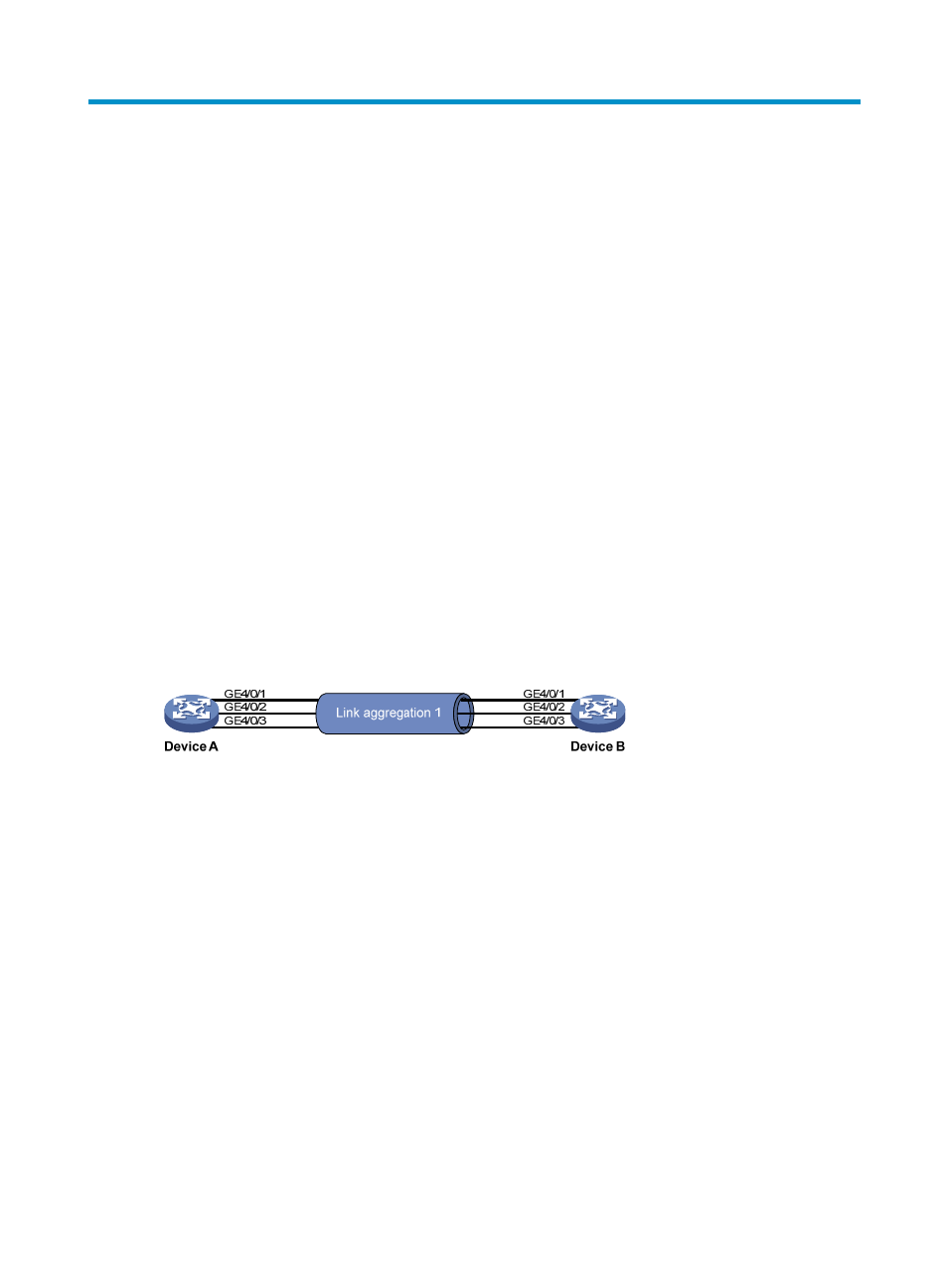Configuring ethernet link aggregation, Overview, Basic concepts – H3C Technologies H3C S12500 Series Switches User Manual
Page 118: See "configuring ethernet link aggregation

105
Configuring Ethernet link aggregation
When the device operating in IRF mode is enabled with enhanced IRF mode, it does not support creating
Layer 3 Ethernet interfaces/subinterfaces or Layer 3 aggregate interfaces/subinterfaces.
The device supports a maximum of 240 aggregation groups. An aggregation group supports a
maximum of 12 Selected ports on a single device. For IRF mode, the maximum number of Selected ports
supported by an aggregation group is 12 multiplied by the number of IRF member devices.
Overview
Ethernet link aggregation, or simply link aggregation, combines multiple physical Ethernet ports into one
logical link, called an aggregate link. Link aggregation delivers the following benefits:
•
Increases bandwidth beyond the limits of any single link. In an aggregate link, traffic is distributed
across the member ports.
•
Improves link reliability. The member ports dynamically back up one another. When a member port
fails, its traffic is automatically switched to other member ports.
As shown in
, Device A and Device B are connected by three physical Ethernet links. These
physical Ethernet links are combined into an aggregate link, Link Aggregation 1. The bandwidth of this
aggregate link is as high as the total bandwidth of these three physical Ethernet links. At the same time,
the three Ethernet links back up one another.
Figure 33 Ethernet link aggregation
Basic concepts
Aggregation group, member port, and aggregate interface
Ethernet link aggregation is implemented through link aggregation groups. An aggregation group is a
group of Ethernet interfaces aggregated together, which are called member ports of the aggregation
group. For each aggregation group, a logical interface, called an aggregate interface is created. To an
upper layer entity that uses the link aggregation service, a link aggregation group looks like a single
logical link and data traffic is transmitted through the aggregate interface.
There are two types of aggregate interfaces: Bridge-Aggregation (BAGG) interfaces, which are Layer 2
aggregate interfaces, and Route-Aggregation (RAGG) interfaces, which are Layer 3 aggregate
interfaces. When an aggregate interface is created, an aggregation group of the same type and
numbered the same is created automatically. For example, when you create interface
Bridge-Aggregation 1, Layer 2 aggregation group 1 is created.
To a Layer 2 aggregation group, you can assign only Layer 2 Ethernet interfaces; to a Layer 3
aggregation group, only Layer 3 Ethernet interfaces.